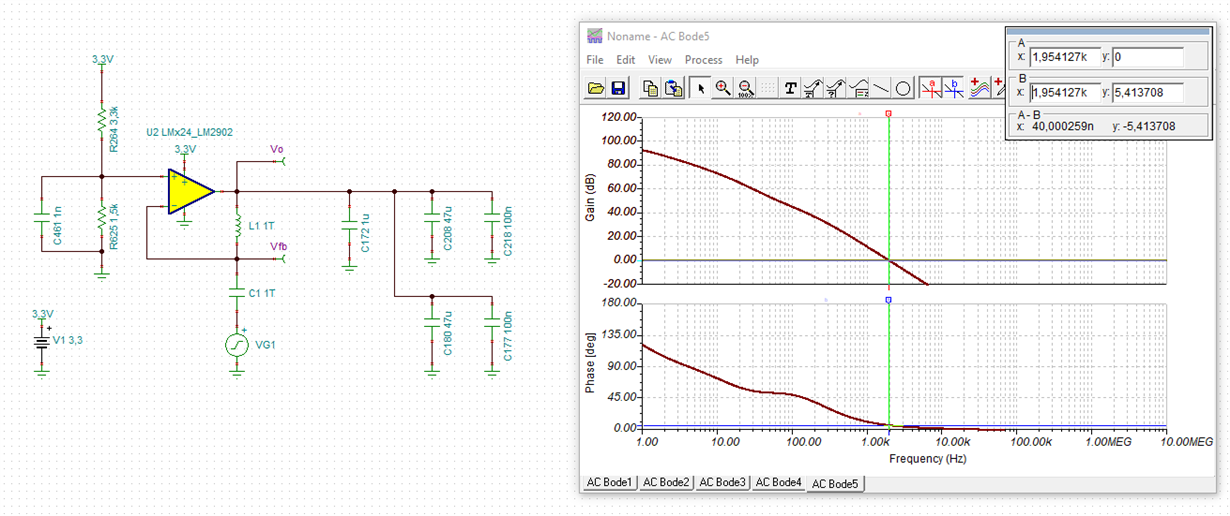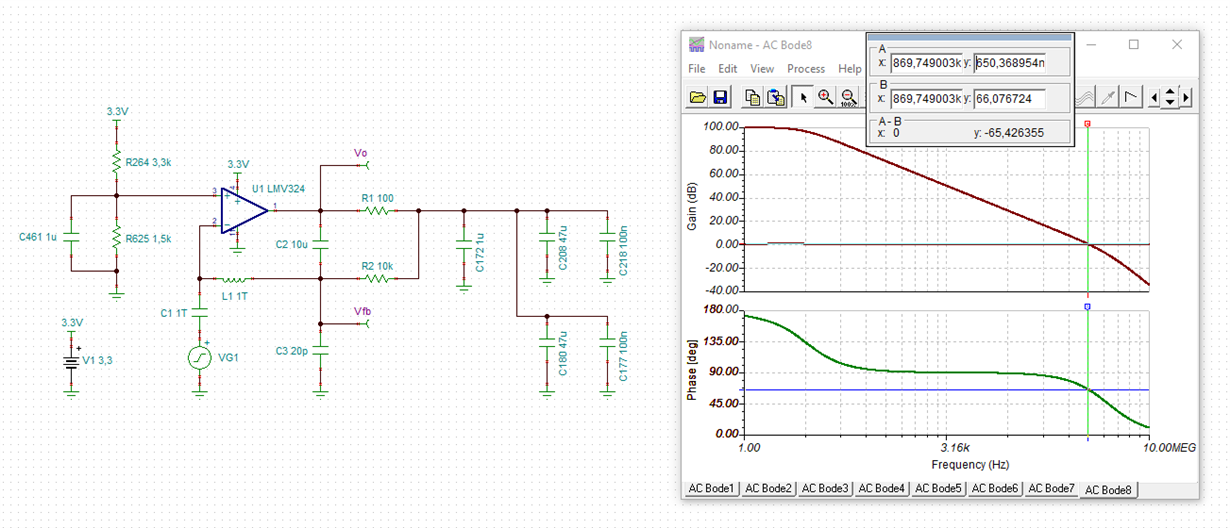Other Parts Discussed in Thread: LM321, LMV321, TINA-TI, , , LM324, LM324LV, LM317
Hi all,
My customer use LMV321 to replace their old LM321 in 1V voltage follower schematic (Vcc: 3.3V). In new design, high failure rate is happened (output oscillation, NG 6/50). Please check the attached pic for their circuit and test condition.
1. Except VCC range, any characteristic will impact the voltage follower design between LM321/LMV321?
2. Any comment about the oscillation? IC issue or design issue or?
Thanks for your response.
Best regards,
Gary Teng










